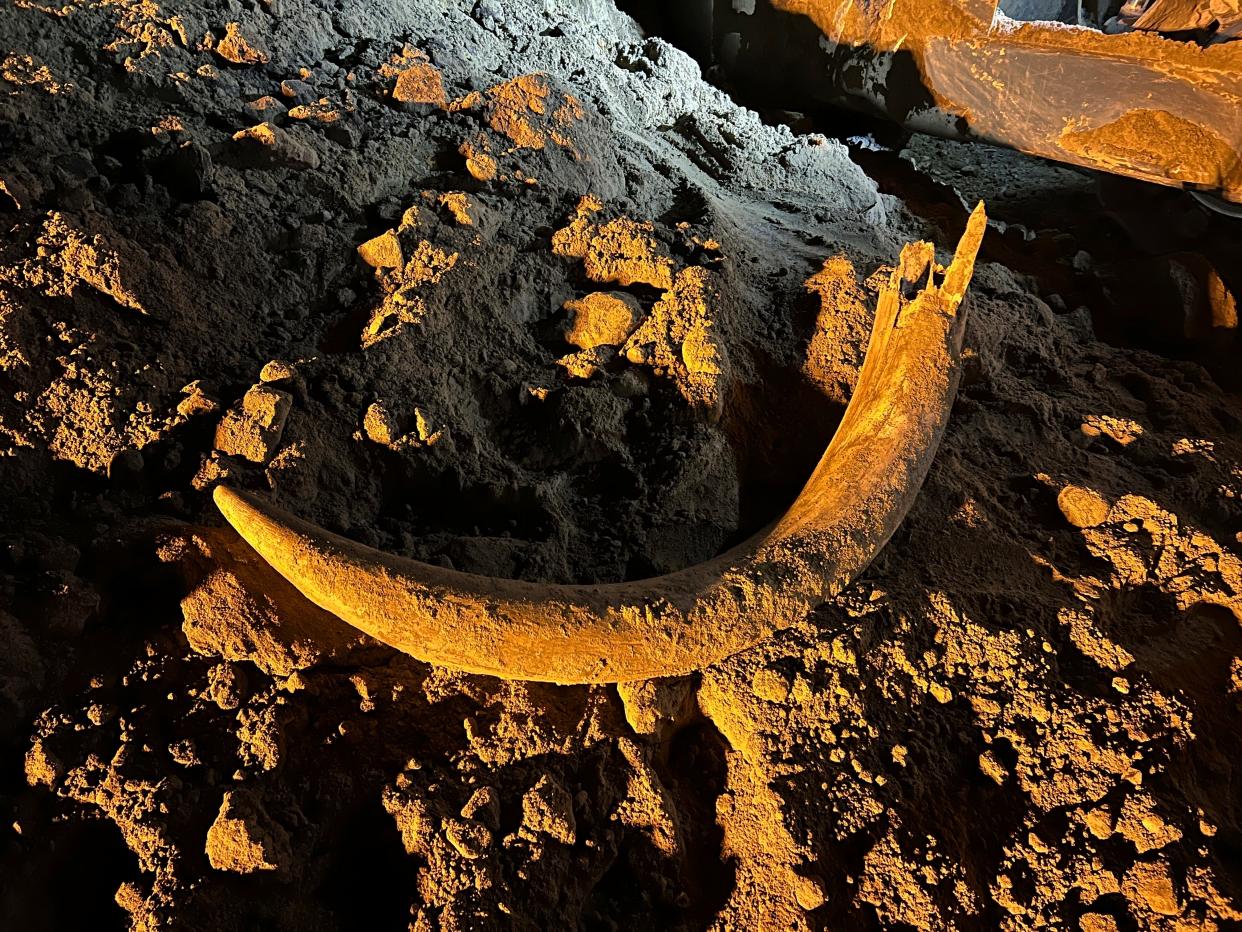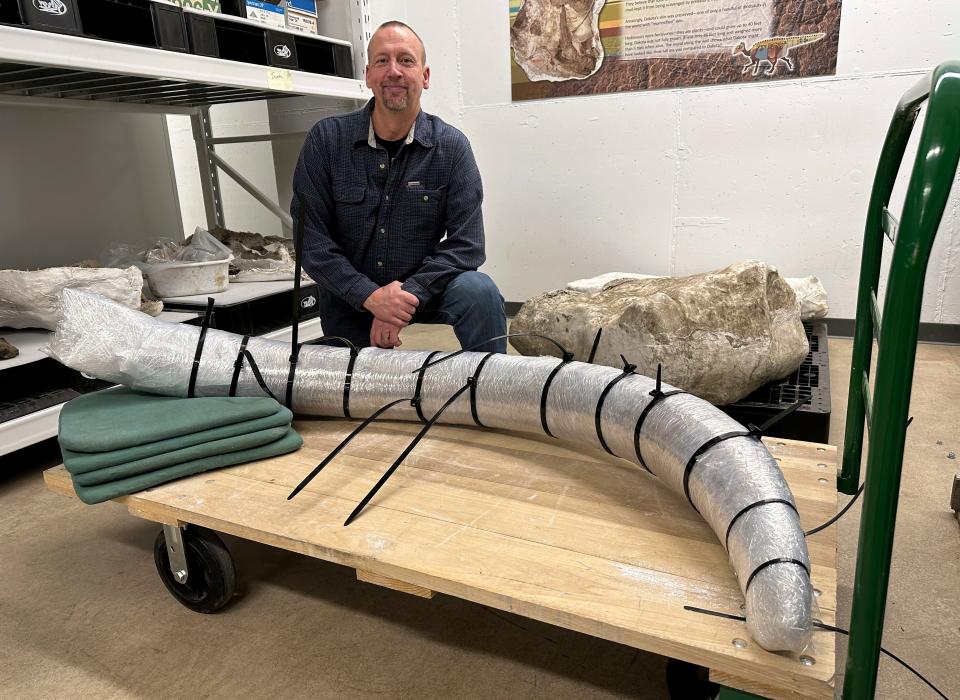'Scientifically important': North Dakota coal miners stumble across mammoth tusk, bones

Months ago, coal miners in North Dakota unearthed a 7-foot-long mammoth tusk buried for thousands of years that state officials hope will soon be on display for the public to see.
The discovery was made in May at the Freedom Mine near Beulah, located about 80 miles northwest of Bismarck, according to state officials. It didn't take long for the workers to recognize that they had found something extraordinary, and they quickly roped off the mine owned by North American Coal and called in some experts to evaluate it.
During the next 12 days, a team led by paleontologists from the North Dakota Geological Survey excavated the old streambed where the fossils were buried and recovered more than 20 bones from the skeleton. Months later, experts now say the find is one of the most complete mammoth skeletons ever discovered in the state.
“Most of the mammoth fossils known from North Dakota are isolated bones and teeth,” Clint Boyd, a senior paleontologist for the North Dakota Geological Survey, said in a statement. “(It's) an exciting and scientifically important discovery."
Studying T-Rex fossils: Could fossils found long ago be another dinosaur species? Study finds new evidence
Plans underway to put tusks, bones on public display
In addition to the massive tusk, the team of paleontologists collected ribs, a shoulder blade, a tooth and parts of the hips.
The specimens were wrapped in a protective plastic and transported to the paleontology lab at the North Dakota Heritage Center & State Museum in Bismarck.
Once they arrived, staff began the meticulous process of cleaning off sediment and stabilizing the delicate bones. The tusk, excavated from 40 feet deep, was later estimated to be 10,000 to 100,000 years old, The Associated Press reported.
At the same time, staff from the geologic survey and the mine began to find ways to integrate the fossils into an educational outreach program. Officials also hope to display the tusk and bones for the public to see.
Prehistoric mammoths in North Dakota

Larger than today's elephants and covered in thick wool, mammoths roamed North America during the Ice Age before they went extinct about 10,000 years ago in what is now North Dakota.
When they existed, the tusked beasts lived alongside other iconic animals like saber-toothed tigers and giant sloths during the Pleistocene Epoch, according to the geologic survey.
While several species were common to what is now the continental United States, including the woolly mammoth, paleontologists said they are still working to identify which species was collected from the mine.
Contributing: The Associated Press
Eric Lagatta covers breaking and trending news for USA TODAY. Reach him at elagatta@gannett.com
This article originally appeared on USA TODAY: Mammoth tusk found by North Dakota coal miners in 'exciting' discovery

